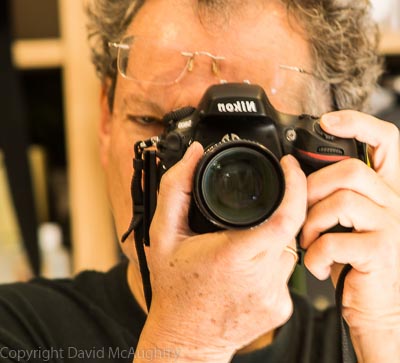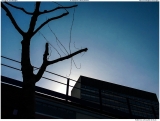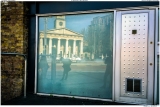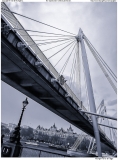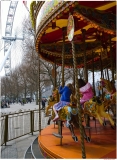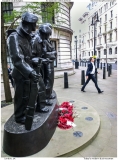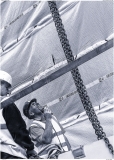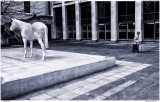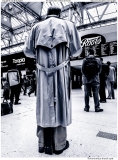On Portability – can a phone substitute for a camera?
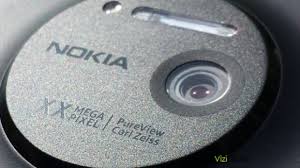 My recent adventures with the world’s only phone capable of taking RAW images. How does it stack up against a ‘real’ camera?
My recent adventures with the world’s only phone capable of taking RAW images. How does it stack up against a ‘real’ camera?
Earlier this year, M*rk sent me this link from the New Yorker. The basic message was that the smart phone, or specifically the iPhone 5 had now replaced even top end cameras for photography – the specific context here was on long treks. The article is worth a read, since it is by a true camera enthusiast, who also does reasonably meaty treks. He echoed my experience, in that big cameras are not viable for long treks, and that something essentially pocketable is the only way to go. But unlike me, his main goal was to share his experiences. Even for my long-suffering nearest and dearest, somewhere after the fifth Himalayan set of identical looking mountain peaks, interest flagged. For me now, the shot has to be intrinsically interesting, not just a shot of a mountain that I took because I and it were there. But the concept of the phone as a replacement for a camera sounded interesting. Was that technically or practically possible?
Well clearly I wasn’t going to buy some piece of cr*p from Apple (see here if you want to know why). So I started to look at the most obvious competitor to the iPhone, the Nokia 1020. And immediately started to find articles like this, quite seriously comparing the 1020 images to a Nikon D800 pro DSLR. Whaaaat?? Well the Nokia is probably a great example of why that once great company slid out of market leadership. As they were going down with all hands, they decided to build the best, no-compromise camera phone ever made. So they put in a large 1/1.5 sensor – that’s around double the area of most compact (non enthusiast cameras) – and then crammed it with with 41 mega pixels. The Nikon D800 with 36 mega pixels is the highest resolution general purpose DSLR made. So while the sensor area of the 1020 is only 15% of the size of the D800, it has more resolving pixels. Hence the apparently crazy comparisons. Oh, and they put in a Carl Zeiss lens, with optical stabilisation (prevents hand shake), and really good light gathering capability at f2.2. Then they put all that in a phone.
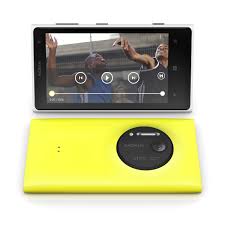 Here it is shown on the left. You would think it would be huge and ungainly, but in fact it was no bigger than my Samsung S3, and beautifully made. The screen is actually gorgeous, and significantly better than the Samsung. But it’s a Windows phone. Ah. Not as bad as Apple, but still my old arch-enemy. But in fact I use Windows PC all the time, and Bill Gates turned out to be saintly – so I thought – lets give it a try. And to my amazement it turned out to be a great phone. Much easier to use and faster than Android – much more flexible and tunable than Apple. Almost every app I needed was available, in one form or another, and the live tiles on the home screen are vastly better than Android or Apple widgets. Possibly not a surprise on reflection – Nokia always made great phones.
Here it is shown on the left. You would think it would be huge and ungainly, but in fact it was no bigger than my Samsung S3, and beautifully made. The screen is actually gorgeous, and significantly better than the Samsung. But it’s a Windows phone. Ah. Not as bad as Apple, but still my old arch-enemy. But in fact I use Windows PC all the time, and Bill Gates turned out to be saintly – so I thought – lets give it a try. And to my amazement it turned out to be a great phone. Much easier to use and faster than Android – much more flexible and tunable than Apple. Almost every app I needed was available, in one form or another, and the live tiles on the home screen are vastly better than Android or Apple widgets. Possibly not a surprise on reflection – Nokia always made great phones.
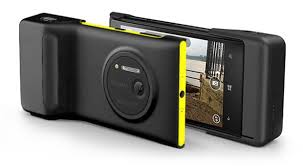 And the killer for me – the phone came with an optional extra that essentially turned it into a real camera. This is a brilliant slip-on case with a hand grip, a proper shutter button, and a tripod mount. The grip contains a battery, so real photography becomes completely possible. And the combined unit slips easily into a pocket – unlike a compact camera.
And the killer for me – the phone came with an optional extra that essentially turned it into a real camera. This is a brilliant slip-on case with a hand grip, a proper shutter button, and a tripod mount. The grip contains a battery, so real photography becomes completely possible. And the combined unit slips easily into a pocket – unlike a compact camera.
Oh – one final thing. Early this year, Nokia issued a software update that allowed users to save images in the RAW format used by all enthusiast and pro cameras. RAW allows the photographer to take the data captured by the sensor, and then use the much bigger horsepower of the PC to get the best out of the image. The 1020 is still the only camera phone that does this – and it transforms the quality possible from the lens and sensor. All in all then, an unalloyed technical miracle. Incredibly for something this far ahead of the market and novel, it works really well, and everything just fits and runs. Battery life by the way is also excellent.
So far so good. My real question was: what’s the actual benefit of this system compared to carrying a real camera around? Firstly the photographs. At the end of this post I show a selection of ‘real’ street shots taken with the 1020. And I think they pass muster. Certainly as good as those I was taking with my Sony S100. It’s fair to say the system exceeded my expectations here.
 Next, what is the photographic experience like? Well here I am speaking purely as a photographer – and this is being a bit harsh on the 1020, but it represents what I have come to learn in the last 6 months or so. As a real camera the Nokia (and I think all camera phones) has some limitations that are stopping me using it all the time. The first is the speed of operation. This is my main phone, so it has personal data on it. I secure that data with a pretty long PIN. So taking a photo involves getting out the phone, waking it up, and entering a long number. Then pressing the camera button, and waiting for the app and hardware to start. About 30 seconds to a minute all together, so no impulse shots. Secondly the lens, like all camera phone lenses is quite wide-angle – around 25mm in full-frame terms. That’s a good focal length for street photography, but not so good for anything more distant. The huge resolution of the camera allows you to crop the image digitally to zoom, and still get better resolution than most compact phones or camera but it’s not a one-step process, you have to swipe the screen to do that. And the camera itself is not fast between shots – it’s saving a 40Mb file, so takes up to 4 seconds. Finally there is no aperture control – only the shutter speed and ISO can be changed. So manual control of shots is not really possible.
Next, what is the photographic experience like? Well here I am speaking purely as a photographer – and this is being a bit harsh on the 1020, but it represents what I have come to learn in the last 6 months or so. As a real camera the Nokia (and I think all camera phones) has some limitations that are stopping me using it all the time. The first is the speed of operation. This is my main phone, so it has personal data on it. I secure that data with a pretty long PIN. So taking a photo involves getting out the phone, waking it up, and entering a long number. Then pressing the camera button, and waiting for the app and hardware to start. About 30 seconds to a minute all together, so no impulse shots. Secondly the lens, like all camera phone lenses is quite wide-angle – around 25mm in full-frame terms. That’s a good focal length for street photography, but not so good for anything more distant. The huge resolution of the camera allows you to crop the image digitally to zoom, and still get better resolution than most compact phones or camera but it’s not a one-step process, you have to swipe the screen to do that. And the camera itself is not fast between shots – it’s saving a 40Mb file, so takes up to 4 seconds. Finally there is no aperture control – only the shutter speed and ISO can be changed. So manual control of shots is not really possible.
What does all this mean to me? Well the width of the lens at 25mm only really makes it suitable for street photography (and even then it’s pretty wide). But that wide and you have to be really close to the subject. Close subjects that move need very good focusing and speed capability in the camera. But the slow speed of the whole process means that you cannot just whip the 1020 out and capture the moment. Even if you are ready and in place you are likely to miss the shot. And of course there is no multi-frame capability. So things have to be more or less static or slow-moving to be caught. Such subjects do exist, but a lot more opportunities cannot be caught. So as a street camera, the 1020 does not work for me. It’s great for many other photographic subjects, but the great merit of a pocket camera is to capture the moment, and the moment is a bit frustrating with this system.
 The clincher for me was my growing use of Flickr as a medium to display my photographs. Flickr is the first app after 6 months of use (and I had 200 apps on the Samsung) that is inferior for my purposes on Windows Mobile. I needed the Android version.
The clincher for me was my growing use of Flickr as a medium to display my photographs. Flickr is the first app after 6 months of use (and I had 200 apps on the Samsung) that is inferior for my purposes on Windows Mobile. I needed the Android version.
So sadly, I today took my SIM out of the Nokia and put it back into the old Sammy S3. I’m going to experiment with a different approach to pocket street cameras, the purpose made Ricoh GR V, another miracle of miniaturization, but this time custom-built for the street. I’ll post on that once I’ve taken delivery and had a bit of practice. In the meantime the lovely Nokia 1020 is going back on the shelf – not by any means a failure – but just not the solution I was looking for. Unless you want to be a hard-core street photographer, I totally recommend the 1020 however. It’s beautiful, easy to use, a great phone, and an amazing camera for most shots. Just not a street camera.
So here are the photographs. As usual, instructions on viewing them are at the end of the post. See more shots on Flickr.
To View: If you have Flash the photos are best seen in full screen (press FS in the bottom right hand corner), and in slide show ( press SL). If you don’t have Flash, i.e if you are using an Apple iPad/Pod/Phone, or a Nexus 7/10 tablet, or any Android tablet running 4.1 +, you can now see them as well. Just click any of the thumbnails and a full screen slide-show should start. Information on each photo can be seen by clicking on the ‘i’ symbol in the upper right corner of the screen show.
